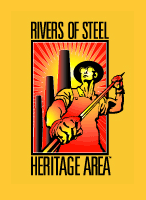Exhibit shows neighborhoods through neighbors' eyes
By Kurt ShawTRIBUNE-REVIEW ART CRITIC
Sunday, August 24, 2008
"Seeing Pittsburgh" is a photography exhibit like none before. It focuses on Pittsburgh and its neighborhoods, but from the perspective of everyday inhabitants -- in essence, making a few neighbors among many photojournalists for a day. story continues below
Forty-four in all were assigned the project of capturing the unique qualities of each specific locale. Some of the results among the nearly 100 images on display are historically significant, some cultural and others simply a slice of life. "We made a real attempt to find different types of Pittsburghers to participate -- children and senior citizens, those who have been in the community for their entire lives and those who have recently arrived," says Ron Baraff, director of Museum Collections and Archives. "The focus wasn't on who could take the best picture, but on how average residents view their neighborhood and their city." Case in point, Christine Bethea's grainy photographs of her Hill District neighborhood, eight in all, are nowhere near the high-quality prints one would expect to find in an art exhibit. But that's because they were all taken with her cell phone. Beautifully arranged, one atop the other in almost film-like fashion, they allow the eye to move from various vignettes captured in and around Bethea's neighborhood as if watching a documentary video: three boys on bicycles, a pit bull sleeping on a porch, a chained up security door. Although it was impossible to include all 90 Pittsburgh neighborhoods in the bordering suburban communities, the goal was to present a diverse sampling of the types of neighborhoods found in the region. Post-industrial neighborhoods like Lawrenceville and the South Side are represented in kitsch-like fashion. Lawrenceville is seen through candy-colored images, such as an interior shot of a shop selling tchochkes by Elise Deluca or a group of passionate priests, taken by fellow Father Don Ware. South Side is seen via vibrant snapshots of equally vibrant stops along Carson Street, taken by Joyce Baronett and Cyril Esser. Point Breeze is representative of the early "suburb within the city" for which it was known. Its identity is further emphasized with a fall shot of Frick Park by Julina Golze. Forest Hills, once a very working-class suburb, is set in a historical light via Sam Lee's foreboding photograph of the atom smasher at the former Westinghouse facility. Looking at the exhibit from a holistic perspective, some threads of consistency seem to rise above others. Some are basic, like the Belgium block streets that run through many Pittsburgh neighborhoods, presented here in images of both Lawrenceville and Beechview captured by Langston MacDiarmid and Max Hurwitz, respectively. Some are more complex, such as the inner workings of a successful community as seen in Sandy Saban's "Fire Truck Blessing," taken at a McKees Rocks firehouse. Here, a priest with piercing eyes makes for a compelling focal point among a few proud fire chiefs. A real standout among all the images on display are Terrence Murphy's photographs of the hard living and the semi-homeless life of a few folks on the North Side, mainly because they represent a different perspective of life on Pittsburgh's streets. In one, a young homeless man named "Dano" holds a cardboard sign on which he wrote "Hungry, Ugly, Broke. Anything Helps," offering both poignant commentary and a bit of wry wit. The exhibit itself is further enhanced by displays created by Ashley Hodder and Michelle Gregio that represent each of the neighborhoods presented. For example, photographs of McKees Rocks are surrounded by railroad tracks. Images of Squirrel Hill -- among which is a shot of a fruit stand by Melanie Groves -- are dispersed among a makeshift fruit stand made with fake fruit. All of the Beechview shots are tastefully arranged on a mock trolley, smaller than a real one, but rather sizable nonetheless. Interspersed among these various displays are supplemental video clips of interviews with the photographers. The interviews allow visitors to hear more about the photographers' ideas about Pittsburgh and their individual neighborhoods. "It's more of a sociological story than an art exhibit," says Tiffani Emig, curator of collections at Rivers of Steel. She, along with Baraff, put together a remarkable catalog for this exhibition that features nearly every photograph in the exhibition along with quotes by each of the amateur photographers. Their portraits and short bios are included. Available for $15.95 at the Bost Building or online, it's almost as good as this must-see exhibit, which will remain on view well past the holidays. Kurt Shaw can be reached at kshaw@tribweb.com.




